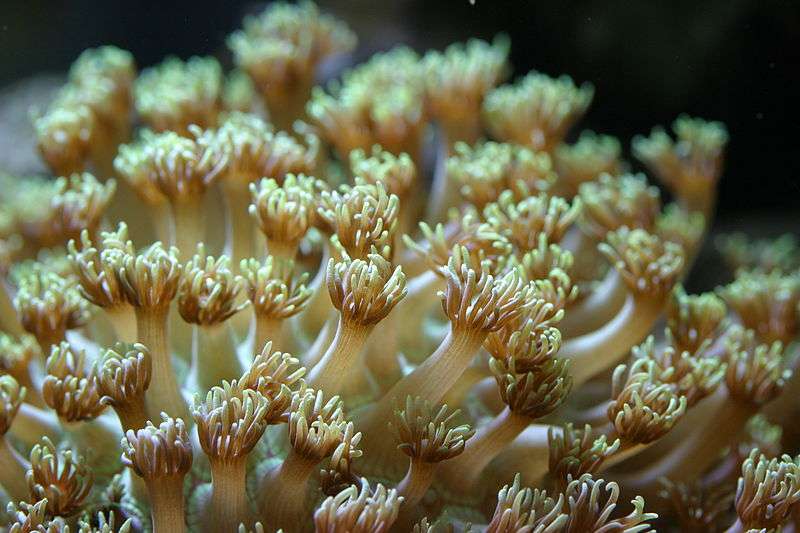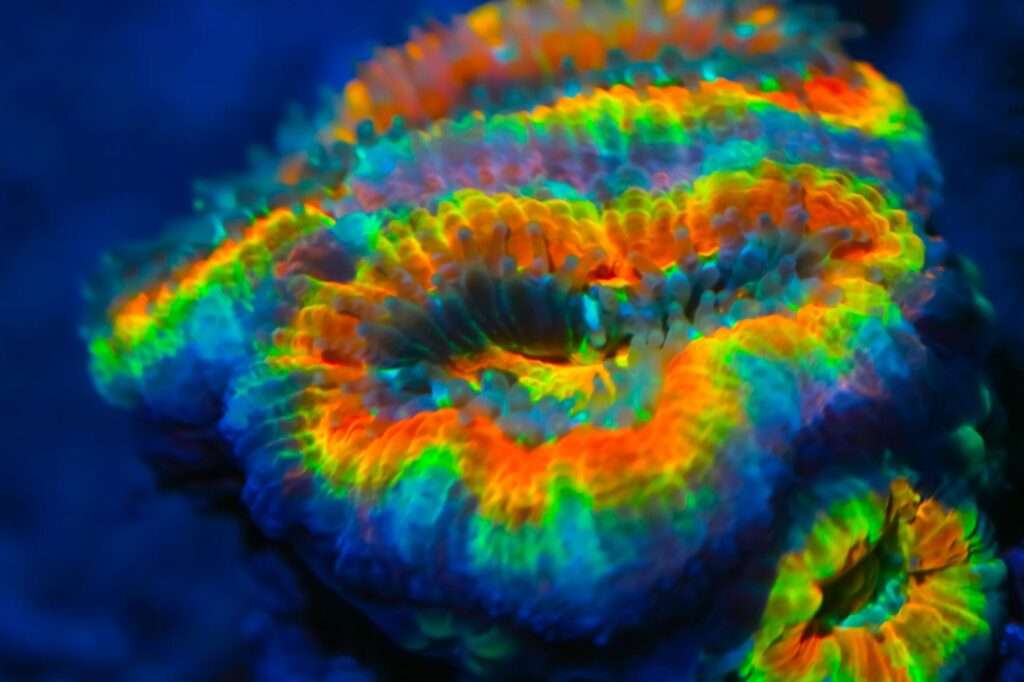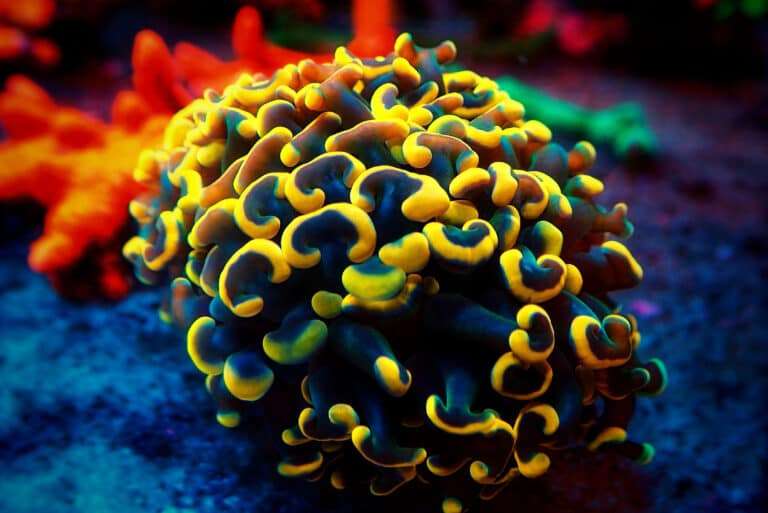
The corals of Goniopora are very attractive and have a peculiar appearance, Goniopora species numerous popular names for these corals accurately describe their look. The majority of them are columnar or enormous in the wild, however some of them can also be encrusting. Their skeletons are light, porous skeletons, but what makes them stand out are the elongated polyps with a mouth area and a fringe of tentacles on top. They resemble a ball or a group of potted flowers very much. Derivative names for the coral include Daisy, Flowerpot, Sunflower, and Ball.
There are 24 polyps in each of the 24 Goniopora species; however, they typically come in a variety of sizes, colors, and shapes. Their sophisticated neurological system is an interesting fact. These corals send impulses to the rest of the coral if you touch one side, and the remainder of the coral will pull in its tentacles!
Habitat
De Blainville first described the Goniopora genus in 1830. The Goniopora genus is found in tropical seas of the Indian Ocean, the majority of the Pacific Ocean, the Red Sea, and Australia’s East, West, and North Coasts. The Goniopora genus can be found in a range of reef habitats, including those with weak to strong currents, clear to gently overcast waters, and low to strong light. On sandy substrates, the G. stokesi is typically seen living in the wild.
Morphology
The Goniopora species can create porous, light-weight vast or columnar forms. They can range from brown to shades of pink, red, cream, yellow, or gray, but are typically green or brown. The color of the polyp column can occasionally differ from that of the tentacles and oral disc. Both the corallites and the tentacle tips of goniopora corals have 24 septa. Goniopora corals have larger polyps than Alveopora corals. Unknown is the lifespan.
- The only Goniopora that is currently free-living and not connected to the reef is the coral G. stokesi. They are located in calm seas on smooth bottoms.
- The underside of G. lobata will always bear a scar from the dissociation from the reef. This crack is vulnerable to infection. They have huge polyps and grow in the form of short, thick columns or hemispherical shapes. They can have contrasting colored oral discs and polyp tips and come in brown, yellow, or green. They can be discovered in murky water.
In Captivity

- Feeding
Goniopora corals have evolved a variety of feeding techniques. Many of its nutrients are obtained through a symbiotic interaction with a sea algae called zooxanthellae. They can also take in dissolved organic substances and planktonic creatures as well as food particles from the water column. Although zooplancton is acceptable, it is not their primary source of nutrition in the wild. It appears that phytoplankton makes up half of their diet. With all the new plankton cultures that are available for purchase, this may be a promising aid in maintaining their viability.
- Social Interactions and Compatibility
A mixed reef garden shouldn’t contain goniopora corals. They will sting nearby corals because they are hostile. It is not a good idea to keep many Goniopora species in the same tank since each species releases a bioactive chemical that is poisonous to the other Goniopora species. Depending on the specimen, the Goniopora may take clown fish. Or, on the other side, they may eventually disappear and perish as a result of a clown fish’s persistent discomfort.
Table





